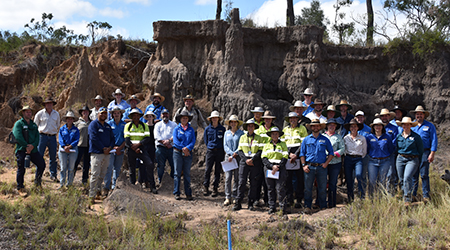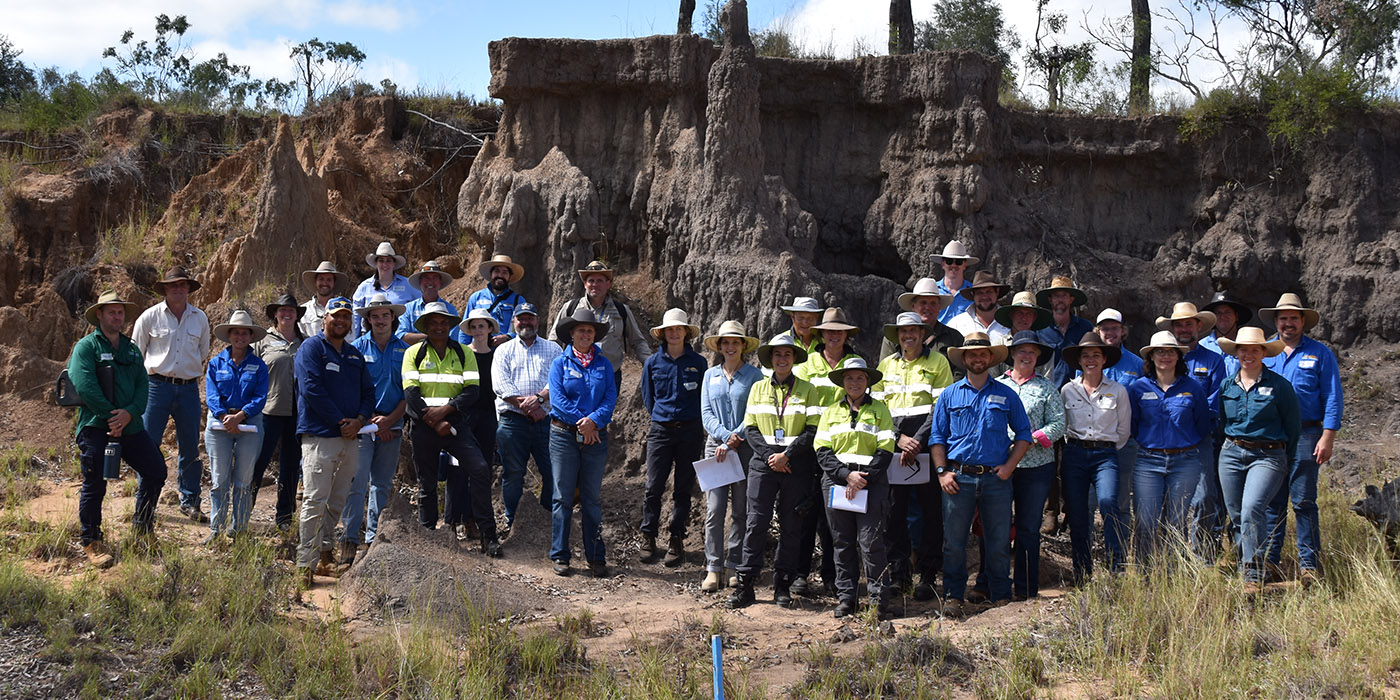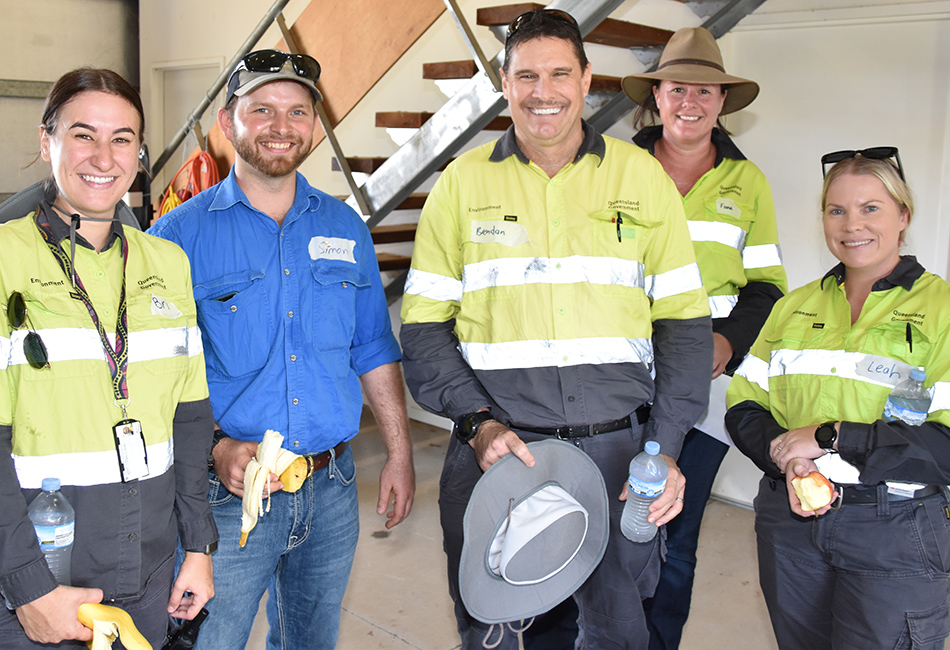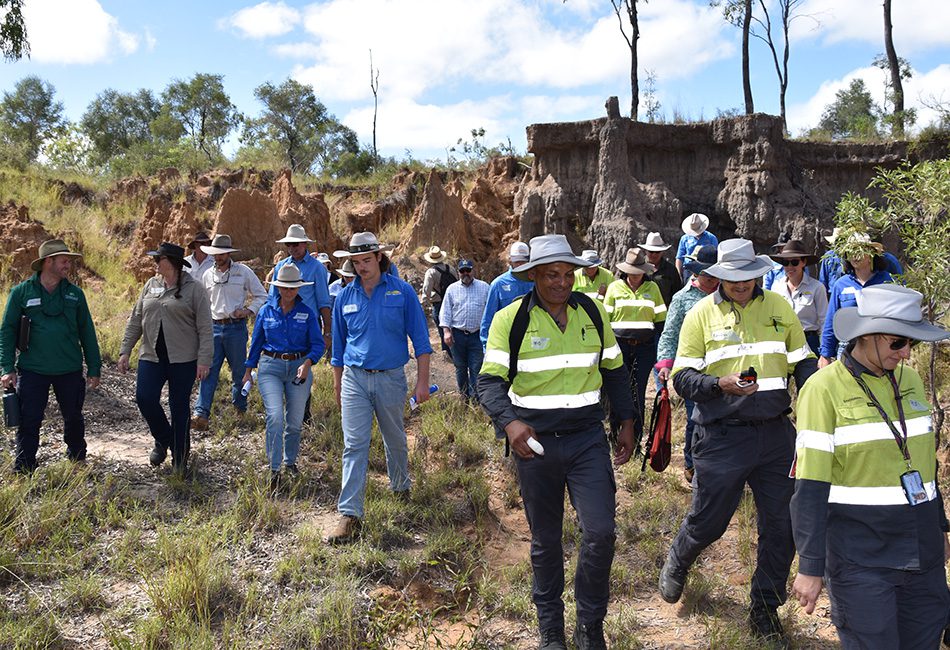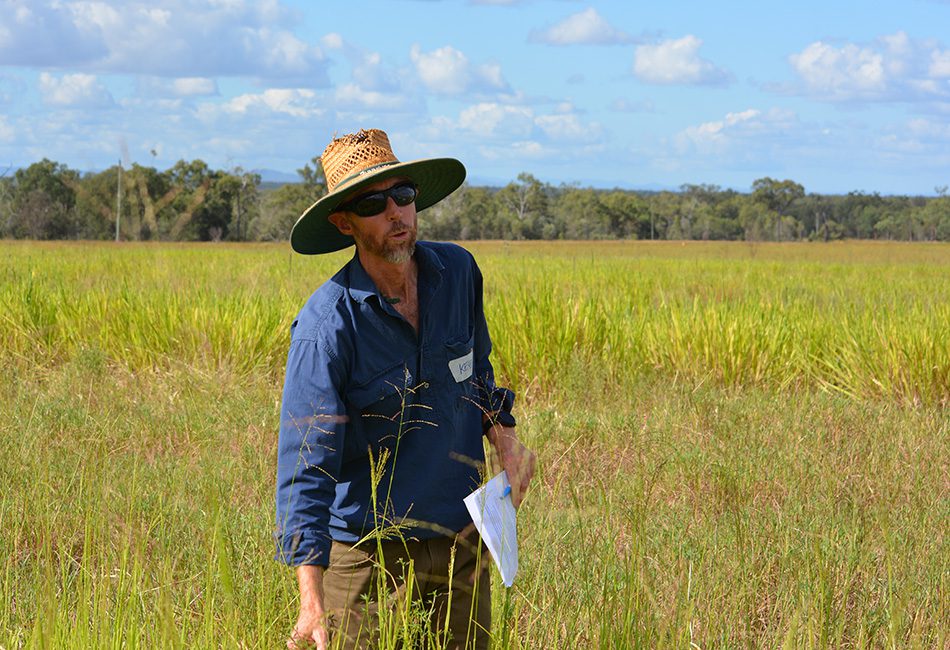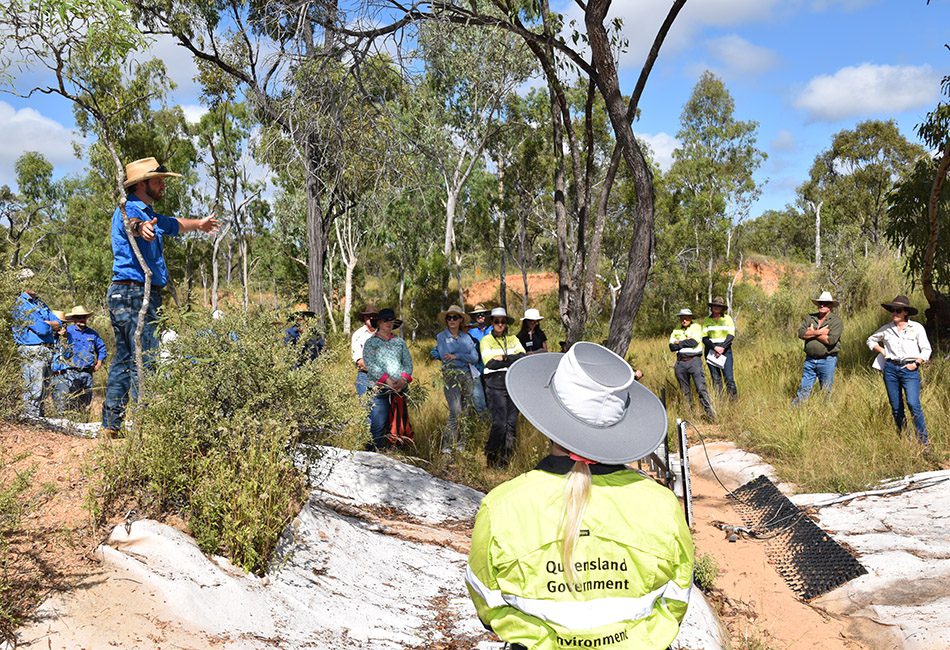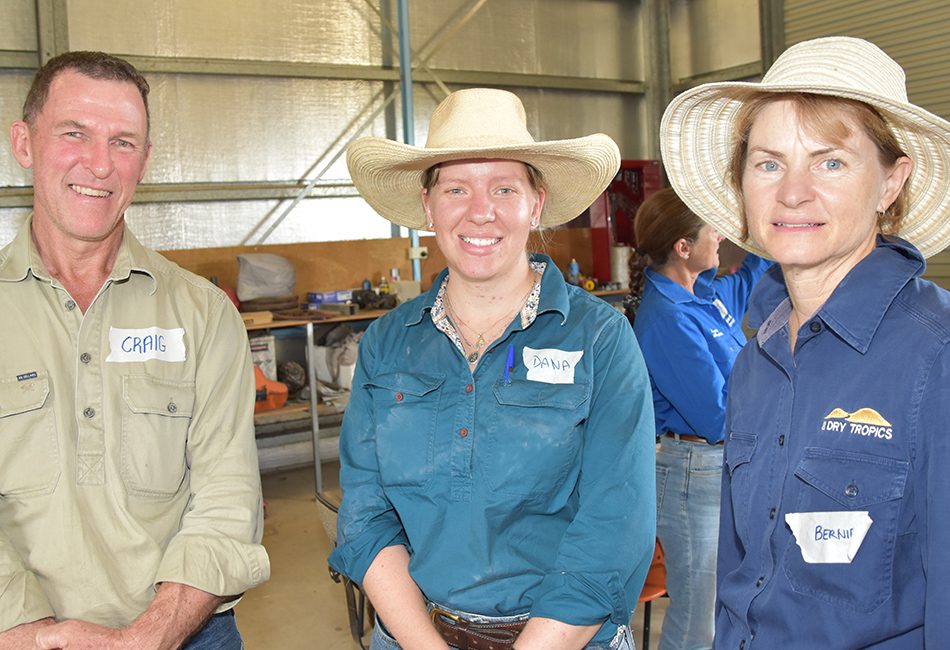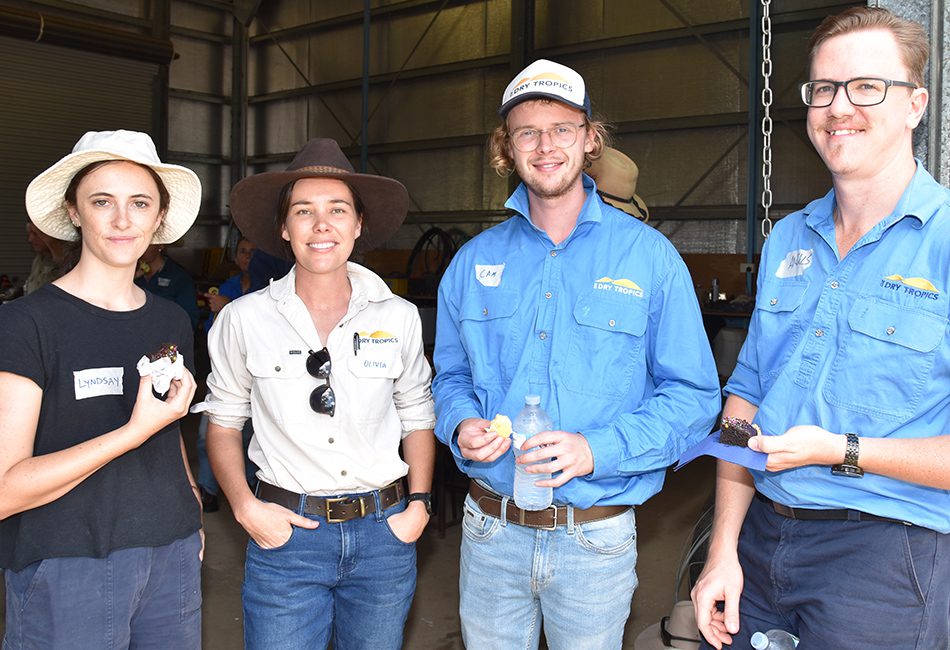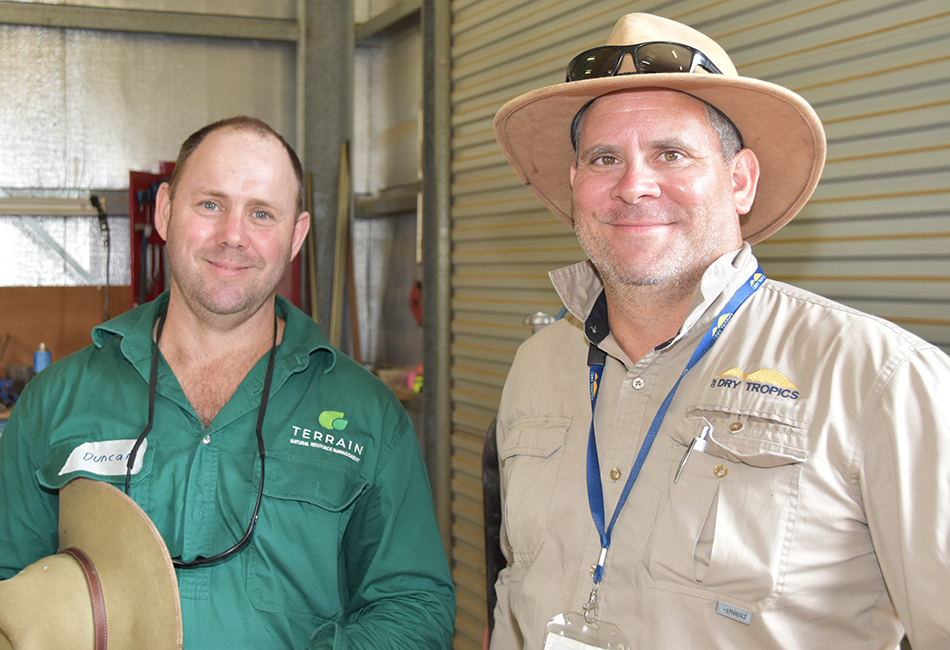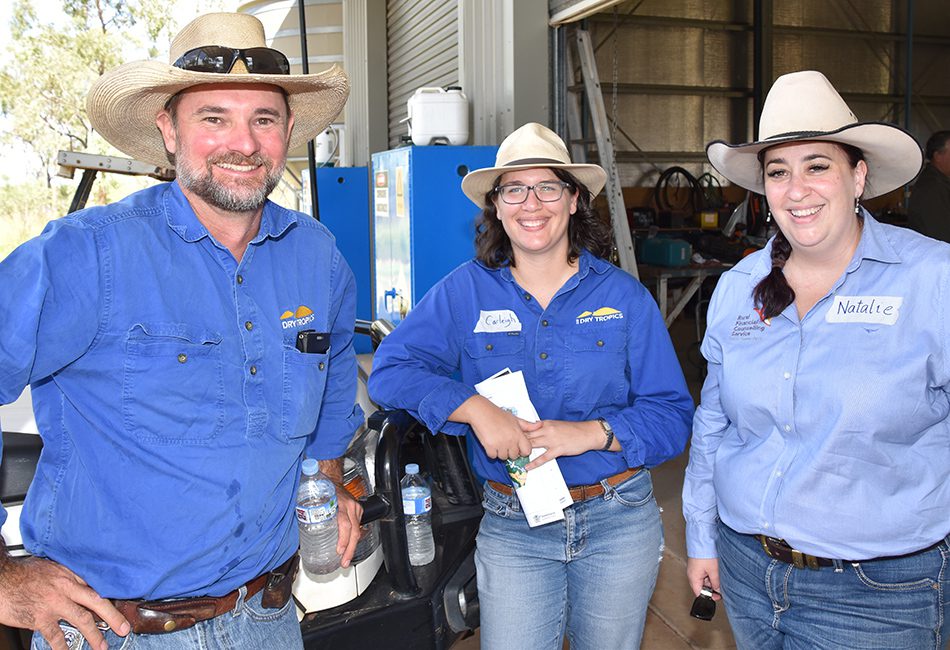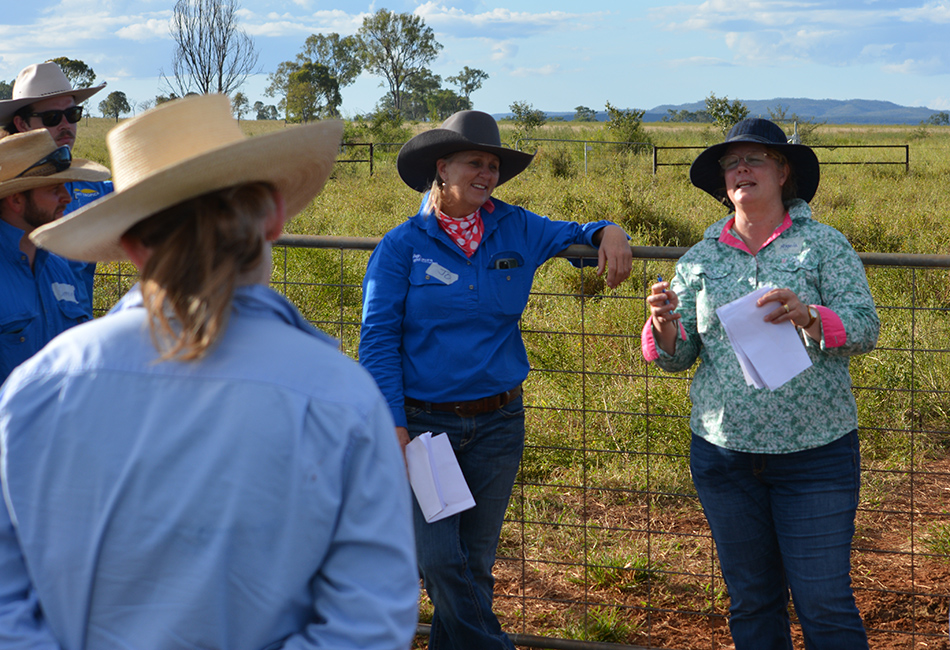Graziers will benefit from Spyglass Station Extension Convention
Participants at the 2023 Extension Convention at Spyglass Station.
The North’s graziers stand to benefit most from a collaborative training event at the recent Department of Agriculture and Fisheries’ (DAF) research property, Spyglass Station north of Charters Towers.
It is the second year the “Extension Convention” has been jointly hosted by DAF and NQ Dry Tropics.
Extension staff from DAF, NQ Dry Tropics, Terrain NRM, North Queensland Rural Financial Services, NRM Regions Queensland and the Department of Environment and Science were among the 40 people participating.
NQ Dry Tropics Grazing Team Leader Josh Nicholls said it was important for extension officers in every organisation to understand the roles others played in support of grazing land managers.
“Knowing the strengths of each organisation gives us as extension officers the ability to make sure the graziers we’re working with get the best possible support from the organisation best-placed to deliver what they need,” Mr Nicholls said.
The two-day convention — in the field at Spyglass on the first day and in the classroom at DAF’s Charters Towers offices on the second day — was also a chance for everybody to ensure their knowledge was up to date and consistent.
One of the mainstays behind organising the joint event was DAF beef extension officer Jo Gangemi, based at Spyglass Station.
“It was a great opportunity for organisations to work together, achieve common goals and support graziers to adopt best practice and improve land condition,” she said.
(Ms Gangemi was ably supported on the organising committee by DAF Extension Officer Bec Clapperton and Senior Grazing Field Officers from NQ Dry Tropics Carleigh Drew and Joe O’Reagain).
DAF presenters on the first day of the convention covered a wide range of research projects in progress at Spyglass Station.
Soil Conservation Officer Simon Hunt explained the range of data being gathered at alluvial gully remediation sites along Continong Creek.
That project focuses on measuring the efficacy and cost-effectiveness of various gully treatments on different soil types and situations.
Monitoring and modelling of sediment carried into the Great Barrier Reef lagoon shows the main source is water flowing from agricultural land, most of it from grazing country.
The second biggest contributor, however, is streambank erosion and the work at Spyglass is also examining that issue.
DAF Senior Scientist Kendrick Cox demonstrated a trial on the establishment, management and economic advantage of pasture legumes on alluvial country in the Burdekin.
DAF Research Scientist Angela Anderson explained how trials were designed and monitored to ensure the results were viable in the scientific community as well as delivering practical information to industry.
She spoke about the design of the Spyglass Medicator Trials in which delivery of phosphorus supplement to cattle was measured when it was delivered in licks compared to being added to watering points.
Phosporus levels in the cattle as well as relative weight gain were being measured.
Dinner at the Charters Towers RSL provided plenty of opportunity for networking and further breaking down barriers.
The second day, in the “classroom” included presentations from the Paddock to Reef team’s Billy Thomson (NRM Regions Queensland), and Dominic Henderson and Katarina Kanakis from the Department of Environmental Services (DES).
James Spragg and Brendan Neale from the DES compliance team explained the procedures followed during a typical compliance visit to a grazing property.
They said, contrary to some speculation, properties were chosen at random from priority areas and the aim was to visit every property eventually.
NQ Dry Tropics supported the convention through the Herding Change Through Grassroots Recovery project funded by the partnership between the Australian Government’s Reef Trust and the Great Barrier Reef Foundation.
Department of Agriculture and Fisheries Soil Conservation Officer Simon Hunt with representatives from the Department of Environment and Science (from left) Briana Kovacich, Brendan Meale, Fiona Schmidt and Leah Mulqueeney at Spyglass Station.
Extension officers walk along the bed of two connected gullies at Spyglass Station, one of several sites where experiments are being conducted to evaluate different remediation techniques and their cost-effectiveness.
DAF Senior Scientist Kendrick Cox.
DAF Soil Conservation Officer Simon Hunt explaining the methodology of data collection at a monitoring site on Continong Creek on Spyglass Station.
NQ Dry Tropics Soil Conservation Officer Bernie Claussen (right) with Department of Agriculture and Fisheries Craig Lemin (Atherton Tablelands) and Dana Walkington (Charters Towers).
NQ Dry Tropics staffers (from left) Environmental Engineer Lyndsay Charlton, Senior Graing Field Officer Olivia Penman, and Grazing FIeld Officers Cameron Sims and Angus Hogg.
Duncan Buckle from the Terrain NRM Sediment Team (left) catches up with NQ Dry Tropics Environmental Engineer Dan Hazelman at the Syglass Station Extension Convention.
Rural Financial Counselling Service counsellor Natalie Hughes (right) with NQ Dry Tropics Senior Grazing Officers Chris Poole and Carleigh Drew.
DAF Beef Extension Officer Jo Gangemi (left) and DAF Research Scientist Angela Anderson.
ALSO IN THIS ISSUE:

